Latest Publications
Unveiling novel Neocosmospora species from Thai mangroves as potent biocontrol agents against Colletotrichum species
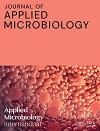 Klomchit, A, Calabon, MS, Worabandit, S, Weaver, JA, Karima, EM, Alberti, F, Greco, C and Mahanil, S
Klomchit, A, Calabon, MS, Worabandit, S, Weaver, JA, Karima, EM, Alberti, F, Greco, C and Mahanil, S
This study aims to investigate the taxonomy, biosynthetic potential, and application of three newly isolated Neocosmospora species from mangrove habitats in the southern part of Thailand using phylogeny, bioactivity screening, genome sequencing, and bioinformatics analysis.
Two fungal isolates of Neocosmospora and a new species of N. mangrovei were reported in this study. These fungal strains showed activity against pathogenic fungi causing anthracnose in chili. In addition, full genome sequencing and bioinformatics analysis of N. mangrovei MFLUCC 17–0253 were obtained.
A distinct, high affinity, alkaline phosphatase facilitates occupation of P-depleted environments by marine picocyanobacteria
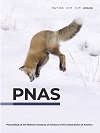 Alberto Torcello-Requena, Andrew Murphy, Ian D. E. A. Lidbury, Frances D. Pitt, Richard Stark, Andrew D. Millard, Richard J. Puxty, Yin Chen, David J. Scanlan
Alberto Torcello-Requena, Andrew Murphy, Ian D. E. A. Lidbury, Frances D. Pitt, Richard Stark, Andrew D. Millard, Richard J. Puxty, Yin Chen, David J. Scanlan
Marine picocyanobacteria of the genera Prochlorococcus and Synechococcus, the two most abundant phototrophs on Earth, thrive in oligotrophic oceanic regions. While it is well known that specific lineages are exquisitely adapted to prevailing in situ light and temperature regimes, much less is known of the molecular machinery required to facilitate occupancy of these low-nutrient environments. Here, we describe a hitherto unknown alkaline phosphatase, Psip1, that has a substantially higher affinity for phosphomonoesters than other well-known phosphatases like PhoA, PhoX, or PhoD and is restricted to clade III Synechococcus and a subset of high light I-adapted Prochlorococcus strains, suggesting niche specificity.
RecGraph: recombination-aware alignment of sequences to variation graphs
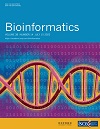 Jorge Avila Cartes, Paola Bonizzoni, Simone Ciccolella, Gianluca Della Vedova, Luca Denti, Xavier Didelot, Davide Monti, Yuri Pirola
Jorge Avila Cartes, Paola Bonizzoni, Simone Ciccolella, Gianluca Della Vedova, Luca Denti, Xavier Didelot, Davide Monti, Yuri Pirola
In this paper, we present the extension of the notion of sequence-to-graph alignment to a variation graph that incorporates a recombination, so that the latter are explicitly represented and evaluated in an alignment. Moreover, we present a dynamic programming approach for the special case where there is at most a recombination—we implement this case as RecGraph. From a modelling point of view, a recombination corresponds to identifying a new path of the variation graph, where the new arc is composed of two halves, each extracted from an original path, possibly joined by a new arc. Our experiments show that RecGraph accurately aligns simulated recombinant bacterial sequences that have at most a recombination, providing evidence for the presence of recombination events.
Imaging Single-Cell Ca2+ Dynamics of Brainstem Neurons and Glia in Freely Behaving Mice
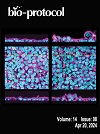 Amol M. Bhandare, Nicholas Dale, Robert T. R. Huckstepp
Amol M. Bhandare, Nicholas Dale, Robert T. R. Huckstepp
In vivo brain imaging, using a combination of genetically encoded Ca2+ indicators and gradient refractive index (GRIN) lens, is a transformative technology that has become an increasingly potent research tool over the last decade. We have refined the intravital imaging technique to image deep brain nuclei in the ventral medulla oblongata, one of the most difficult brain structures to image due to the movement of brainstem structures outside the cranial cavity during free behaviour (head and neck movement), whose targeting requires GRIN lens insertion through the cerebellum—a key structure for balance and movement. Our protocol refines the implantation method of GRIN lenses, giving the best possible approach to image deep extracranial brainstem structures in awake rodents with improved cell rejection/acceptance criteria during analysis. This revised method paves the way to image challenging brainstem structures to investigate their role in complex behaviours such as breathing, circulation, sleep, digestion, and swallowing, and could be extended to image and study the role of cerebellum in balance, movement, motor learning, and beyond.
Xavier Didelot publications
 Epistasis, core-genome disharmony, and adaptation in recombining bacteria
Epistasis, core-genome disharmony, and adaptation in recombining bacteria
Aidan J. Taylor, Koji Yahara, Ben Pascoe, Seungwon Ko, Leonardos Mageiros, Evangelos Mourkas, Jessica K. Calland, Santeri Puranen, Matthew D. Hitchings, Keith A. Jolley, Carolin M. Kobras, Sion Bayliss, Nicola J. Williams, Arnoud H. M. van Vliet, Julian Parkhill, Martin C. J. Maiden, Jukka Corander, Laurence D. Hurst, Daniel Falush, Paul Keim, Xavier Didelot, David J. Kelly, Samuel K. Sheppard
Recombination of short DNA fragments via horizontal gene transfer (HGT) can introduce beneficial alleles, create genomic disharmony through negative epistasis, and create adaptive gene combinations through positive epistasis. For non-core (accessory) genes, the negative epistatic cost is likely to be minimal because the incoming genes have not co-evolved with the recipient genome and are frequently observed as tightly linked cassettes with major effects. By contrast, interspecific recombination in the core genome is expected to be rare because disruptive allelic replacement is likely to introduce negative epistasis. Why then is homologous recombination common in the core of bacterial genomes? To understand this enigma, we take advantage of an exceptional model system, the common enteric pathogens Campylobacter jejuni and C. coli that are known for very high magnitude interspecies gene flow in the core genome. As expected, HGT does indeed disrupt co-adapted allele pairings, indirect evidence of negative epistasis. However, multiple HGT events enable recovery of the genome's co-adaption between introgressing alleles, even in core metabolism genes (e.g., formate dehydrogenase). These findings demonstrate that, even for complex traits, genetic coalitions can be decoupled, transferred, and independently reinstated in a new genetic background-facilitating transition between fitness peaks. mBio. April 2024
 KmerAperture: Retaining k-mer synteny for alignment-free extraction of core and accessory differences between bacterial genomes
KmerAperture: Retaining k-mer synteny for alignment-free extraction of core and accessory differences between bacterial genomes
Matthew P. Moore, Mirjam Laager,Paolo Ribeca, Xavier Didelot
By decomposing genome sequences into k-mers, it is possible to estimate genome differences without alignment. Techniques such as k-mer minimisers, for example MinHash, have been developed and are often accurate approximations of distances based on full k-mer sets. These and other alignment-free methods avoid the large temporal and computational expense of alignment. However, these k-mer set comparisons are not entirely accurate within-species and can be completely inaccurate within-lineage. This is due, in part, to their inability to distinguish core polymorphism from accessory differences. Here we present a new approach, KmerAperture, which uses information on the k-mer relative genomic positions to determine the type of polymorphism causing differences in k-mer presence and absence between pairs of genomes. We show that KmerAperture can accurately distinguish both core and accessory sequence diversity without alignment, outperforming other k-mer based tools.
Detection of membrane fission in single Bacillus subtilis cells during endospore formation with high temporal resolution
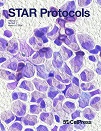 Ane Landajuela, Martha Braun, Christopher D.A. Rodrigues, Erdem Karatekin
Ane Landajuela, Martha Braun, Christopher D.A. Rodrigues, Erdem Karatekin
Membrane fission is an essential process in all domains of life. The underlying mechanisms remain poorly understood in bacteria, partly because suitable assays are lacking. Here, we describe an assay to detect membrane fission during endospore formation in single Bacillus subtilis cells with a temporal resolution of ∼1 min. Other cellular processes can be quantified and temporally aligned to the membrane fission event in individual cells, revealing correlations and causal relationships.
